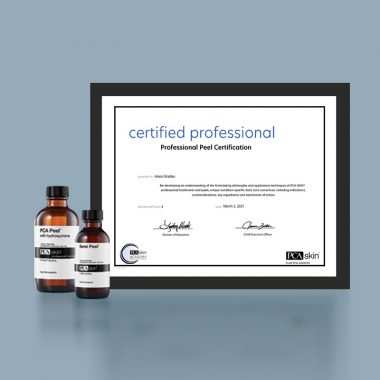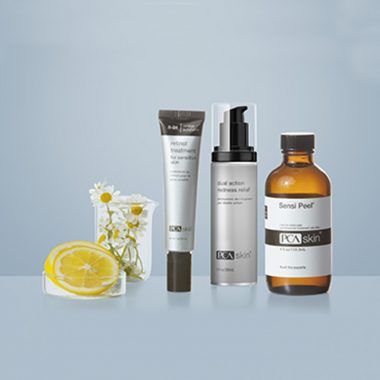Rosacea
Rosacea is a chronic sensitive skin condition often involving inflammation of the cheeks, nose, chin, and forehead. Rosacea sufferers may experience sensitivity, excessive flushing, persistent redness, broken capillaries, or breakouts.
Jump to
Rosacea
- Rosacea is seen more frequently in women aged 30-50; however, it typically affects men more destructively.
- Compared to others, rosacea sufferers may get red easier and remain red longer when participating in any activity or behavior that causes general flushing (exercise, steam, stress, etc.).
- Dry skin and barrier dysfunction are common among certain rosacea sufferers. Not addressing this dryness/dehydration will worsen the symptoms of rosacea.
- If left untreated, rosacea tends to worsen.
Types
& Causes
Rosacea
Rosacea subtypes
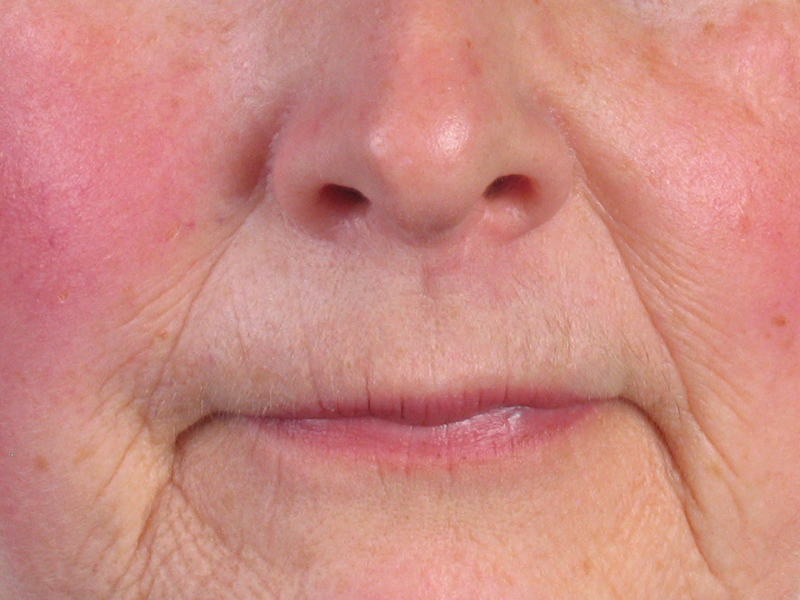
Subtype one (erythematotelangiectatic rosacea) – flushing and persistent redness of the central third of the face, typically with visible telangiectasias
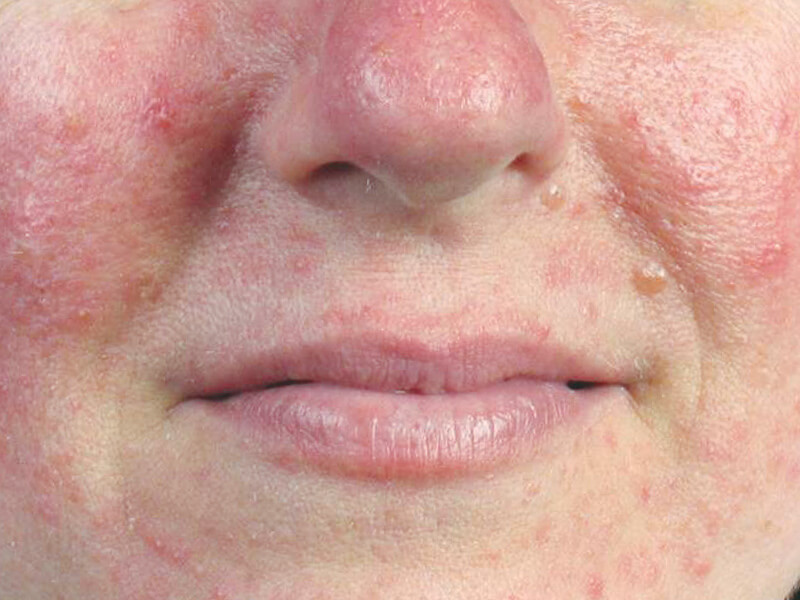
Subtype two (papulopustular rosacea) – persistent redness of the central third of the face accompanied by papules and pustules
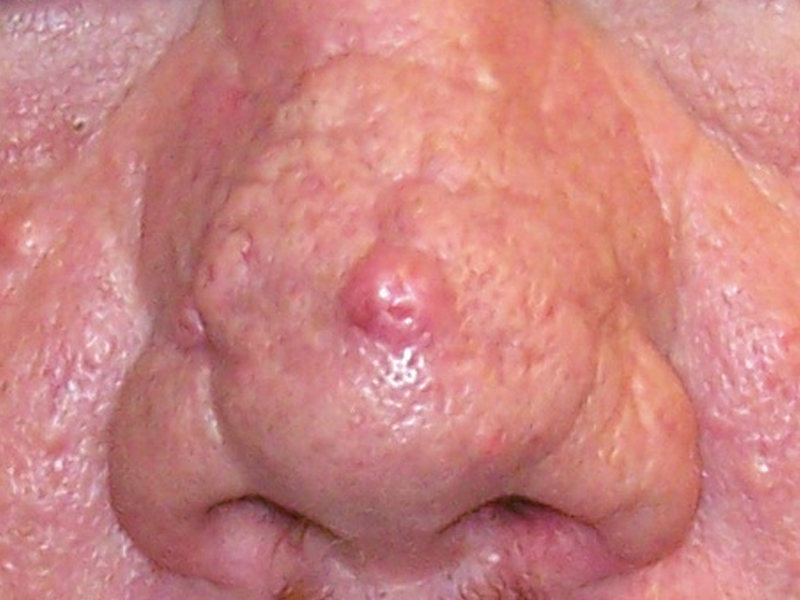
Subtype three (phymatous rosacea) – thickening of the skin, irregular surface nodularities, and enlargement; most commonly presented as rhinophyma (enlargement of the nose), but may affect other locations, such as the glabella and chin
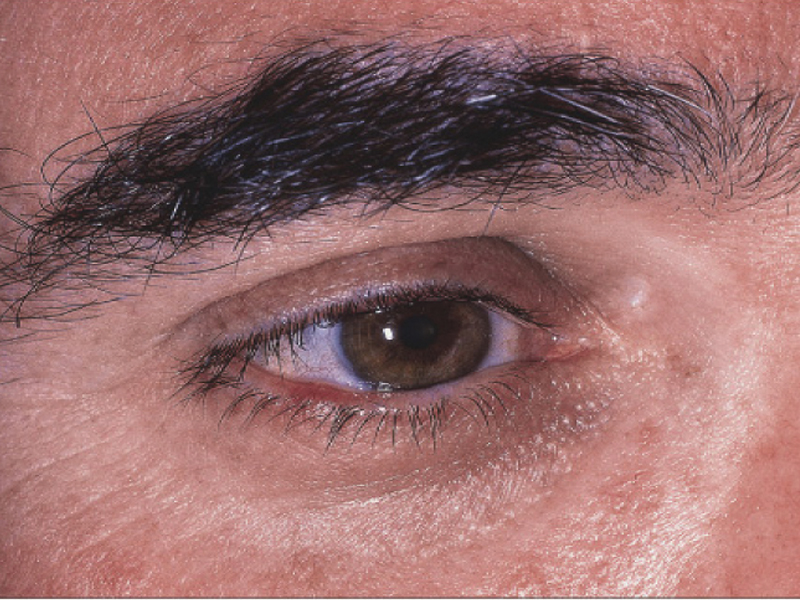
Subtype four (ocular rosacea) – irritation of the eye area, including watery, bloodshot eyes, foreign body sensation, burning, stinging, dryness, itching, and frequent styes, that may result in blepharitis, conjunctivitis, or irregularity of the eyelid margins
Potential causes of rosacea
Studies performed on rosacea patients demonstrate a variety of potential contributors to the rosacea pathway. There have been no conclusive findings as to the cause of rosacea. The most common theories are listed below, although some are more substantiated than others:
- Vascular dysfunction
Studies have shown that people with rosacea may experience increased blood flow to the vessels of the face. There is an increase in the number of blood vessels and blood vessels may be closer to the surface of the face, making redness and visible superficial capillaries more common. Certain pro-inflammatory mediators found naturally within the skin may be more prominent or active in rosacea sufferers. - Vascular endothelial growth factor (VEGF)
VEGF stimulates the growth and development of new blood vessels, which is proven to play a role in the pathogenesis of rosacea. VEGF also encourages microcapillary hyperpermeability (leakiness). Studies suggest that plasma leaking to surrounding tissues may induce an inflammatory response, causing redness and irritation. - Prostaglandin E2 (PGE2)
This group of hormone-like substances participates in the dilation of blood vessels. PGE2 is released by blood vessel walls in response to inflammation. - Pro-inflammatory cytokines
Also known to be involved in rosacea, they are part of the flushing and chronic inflammatory responses. There are many potential cytokines involved in this inflammatory pathway.
Common rosacea triggers
Certain environmental and dietary elements act as triggers for rosacea. Avoiding the following will not cure rosacea, but can help keep it less irritated, red, and inflamed:
Temperature-related triggers:
- drinking alcoholic beverages
- using alcohol-based products topically
- eating spicy foods
- drinking hot beverages such as coffee and tea n using saunas, steam rooms, and hot tubs
- exercising
- experiencing extremes in temperature
Other triggers:
- using aggressive mechanical exfoliation (e.g. loofahs, nut-based scrubs) n smoking
- certain medications, cosmetics, and foods
- leading a stressful lifestyle
Treatments
& Protocols
How to Treat
-
Sensitive Skin: Gently Exfoliate and Increase Cell Turnover -
Sensitive Skin: Decrease Redness and Inflammation -
Sensitive Skin: Increase Hydration to Control Excessive Dryness -
Papulopustular Rosacea: Decrease Possible Bacterial Factors -
Sensitive Skin: Protect from UV Exposure (SPF)
Professional Treatment Protocols
-
Sensi Peel® Treatment Protocol -
Ultra Peel® Treatment Protocol -
Hydrate: Therapeutic Oat Milk Mask for Sensitized Skin Conditions

